I am teaching students about the differential pair (see circuit below). I addressed many issues like the difference between differential and common mode gain, taking arbitrary vb1 and vb2 signals and expressing them with common mode + differential components, and finally using current mirrors for single-ended conversion.  One thing I have not addressed is that the differential pair is easy to saturate. Very seldom does the differential pair operate as a linear amplifier, but rather the outputs usually are pushed to their limit (to their rails). In fact, the range of differential inputs that produce linear outputs is very small (perhaps +/- two thermal voltages as seen below). What I would like to know from you is if there are any applications of the differential pair that depend on using the linear region only? Telecom antenna preamps? Wheatstone bridges?
One thing I have not addressed is that the differential pair is easy to saturate. Very seldom does the differential pair operate as a linear amplifier, but rather the outputs usually are pushed to their limit (to their rails). In fact, the range of differential inputs that produce linear outputs is very small (perhaps +/- two thermal voltages as seen below). What I would like to know from you is if there are any applications of the differential pair that depend on using the linear region only? Telecom antenna preamps? Wheatstone bridges? Thanks for your help - (this is my first stackexchange post)
Thanks for your help - (this is my first stackexchange post)
- 71
- 1
- 3
-
2I am not an IC designer, but if you replace the two resistors labelled Rc with a current mirror, I believe you will get much higher gain and extend the linear region, although it will cost you some headroom. Well worth doing much of the time. – user57037 Oct 12 '15 at 22:41
-
2Too lazy to write a full answer, but almost any opamp with BJT input stage. Also the (hardly used nowadays) [ECL](https://en.wikipedia.org/wiki/Emitter-coupled_logic). – Fizz Oct 12 '15 at 22:42
-
I probably misunderstood what you meant by "linear region" in my comment. But I will leave it there anyway. – user57037 Oct 12 '15 at 22:51
-
Also, I don't know if this really counts as use, but the differential pair are the only transistors in the [Boyle macromodel](http://electronics.stackexchange.com/a/193202/54580) of the opamp typically used in SPICE simulations (for older opams); the rest are ideal sources, etc. The newer opapms have more sophisticated SPICE models, but the number of transistors is still usually restricted to just these two. – Fizz Oct 12 '15 at 23:16
-
An alternate formulation of your question might be "Are there any applications for a differential pair running "open loop" as an amplifier (not a switch)". You'll be the judge on whether that expresses your question more clearly, but that's the interpretation I took from it :) – scanny Oct 12 '15 at 23:18
-
"One thing I have not addressed is that the differential pair is easy to saturate" - You make that sound like a bad thing. I could rephrase that to say you can get the full current swing with only about 50mV input swing. A differential pair has a very high gain. You can always attenuate the input signal if you need to. – Kevin White Oct 12 '15 at 23:38
-
@mkeith I am an IC designer ;-) and you're right you get more gain when the load is a current mirror. However that also reduces the bandwidth. What load to choose is a trade off between gain, BW, lineairity and of course current consumption. – Bimpelrekkie Oct 13 '15 at 09:10
-
The differential pair is THE building block for almost all ICs with linear gain. An ideal opamp has infinite gain, with actual gain being determined by external feedback. Look at the block diagram of any opamp or comparator and you will find a slew of differential pairs. – Russell McMahon Oct 14 '15 at 00:50
3 Answers
A similar circuit is on the input of operational amplifiers. Yes-- it saturates quite easily, which is why it is usually configured in a negative feedback arrangement.
In fact, Analog Devices uses almost exactly this circuit in a document describing how to protect input stages on opamps. Real op amps are much more complicated, but its a good first order approximation.
 from http://www.analog.com/library/analogDialogue/archives/41-05/input_protection.html
from http://www.analog.com/library/analogDialogue/archives/41-05/input_protection.html
Look familiar??
Notice, the output of the circuit is fed back to negative input, introducing negative feedback and keeping the overall gain in control.
- 29,274
- 4
- 44
- 109
-
Yes, of course **OpAmp**s are THE typical application of a differential pair. They don't have to be linear at all. It's enough if the output is monotonous to the input (difference voltage). They may saturate easily. That's no problem because (as Olin mentioned) most of the time they are operated in a way that negative feedback avoids saturation (open loop amplification is not primarily relevant). – Curd Oct 13 '15 at 01:23
-
2
-
1If the output is monotonous I'd look for a more interesting input. – Todd Wilcox Oct 13 '15 at 12:30
-
@Scott: yes, "monotonic". English is not my first language and in my first language we use the same adjective for both meanings :-). – Curd Oct 14 '15 at 07:58
You'll see this circuit used in voltage controlled amplifiers. Here an audio signal is feed into one of the inputs and the current through the emitters controls the gain of the amplifier.
A google search for "discrete synth vca" will give you several example circuits. Here is a simple one:
- 5,087
- 1
- 19
- 28
You are right in that this circuit is not very linear. It's main feature is that it has low offset voltage between the two input. It is therefore commonly used where the gain will be large in the circuit itself, but there will be negative feedback around this circuit at a higher level. That means the differential pair is only operated at a few mV difference either way, anything more than what causes the open loop output to saturate is irrelevant.
- 310,974
- 36
- 428
- 915
